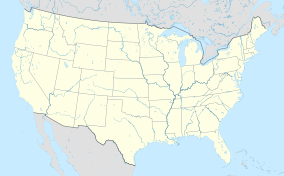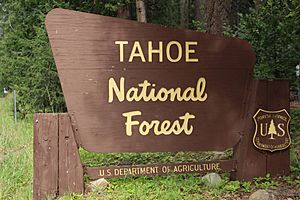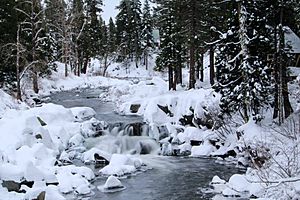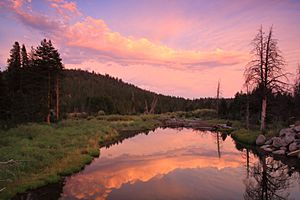Tahoe National Forest facts for kids
Quick facts for kids Tahoe National Forest |
|
|---|---|
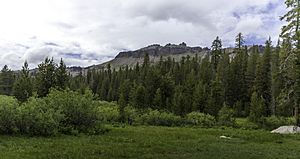
Castle Valley near Lake Tahoe
|
|
| Location | Northwest of Lake Tahoe, California, U.S. |
| Nearest city | Truckee, California |
| Area | 871,495 acres (3,526.82 km2) |
| Governing body | U.S. Forest Service |
| Website | Tahoe National Forest |
The Tahoe National Forest is a large United States National Forest located in California. It sits northwest of the famous Lake Tahoe. This forest is home to the impressive Sierra Buttes peak, which is about 8,587 feet (2,617 meters) tall. From here, you can see amazing views of Mount Lassen and Mount Shasta.
The forest covers parts of six different counties in California: Sierra, Placer, Nevada, Yuba, Plumas, and El Dorado. It's a huge area, covering about 871,495 acres (which is over 3,500 square kilometers). The main office for the forest is in Nevada City, California. You can also find smaller ranger offices in towns like Camptonville, Foresthill, Sierraville, and Truckee.
Tahoe National Forest offers many fun things for visitors to do. It has hundreds of lakes and reservoirs, like Boca Reservoir. There are also deep river canyons carved into granite rock. You can explore many miles of trails, including a part of the famous Pacific Crest Trail. The Granite Chief Wilderness area is also nearby, with even more trails to discover.
This forest is also very important for water. It acts as the source for water supplies for towns like Lincoln, Auburn, and Rocklin. The cities of Reno, Nevada and Sparks, Nevada also get their water from the Truckee River, which flows through the forest. Interestingly, the Tahoe National Forest is also home to three rare wolverines!
Contents
What is the Tahoe National Forest?
The idea of Forest Reserves began in 1893. This was to stop people from using up all the natural resources without control. In California, the Sierra Forest Reserve was once over 4 million acres. The Tahoe National Forest started as the Lake Tahoe Forest Reserve on April 13, 1899. Its name was changed to Tahoe on October 3, 1905.
In 1905, President Theodore Roosevelt helped move the forest reserves to the Department of Agriculture. This is when the Forest Service was created, with Gifford Pinchot as its first chief. This was the start of the United States National Forest System. In 1908, the large Sierra National Forest was split into five parts. Over time, more changes happened. Today, Tahoe is one of eight national forests in the Sierra Nevada Mountain Range. These forests, from north to south, are: Plumas, Tahoe, Eldorado, Toiyabe, Stanislaus, Inyo, Sierra, and Sequoia.
The main goal for National Forests was set by James Wilson, who was the U.S. Secretary of Agriculture. He said that National Forests are meant to:
- Make sure there's always enough timber (wood) for local businesses.
- Protect the forest cover, which helps control how streams flow.
- Keep local people safe from unfair competition when using forest resources.
This means that the timber, water, pasture (grazing land), and minerals in these forests are for everyone to use responsibly.
What plants grow in the forest?
A report from 2002 found that nearly 84,000 acres (about 340 square kilometers) of old growth trees are in the Tahoe National Forest. Old growth means very old and large trees. These include different types of trees like:
- Coast Douglas fir
- Ponderosa pine
- White fir
- Sugar pine
- California incense cedar
- California black oak
- Lodgepole pine
- Red fir
However, some unwanted plants, called invasive weeds, have also been found in the forest. These include thistles, knapweeds, mustards, toadflaxes, daisies, brooms, and aquatic (water-based) weeds. These plants can sometimes harm the natural balance of the forest.
Placer County Big Trees Grove
The Placer County Big Trees Grove is a special place within the Tahoe National Forest. It's home to giant sequoia trees. This grove is known for being "tiny" compared to other sequoia groves. It is also the northernmost place where giant sequoias grow. The grove has six very old giant sequoias, and two of them are considered "giant" in size.
See also
 In Spanish: Bosque nacional Tahoe para niños
In Spanish: Bosque nacional Tahoe para niños


